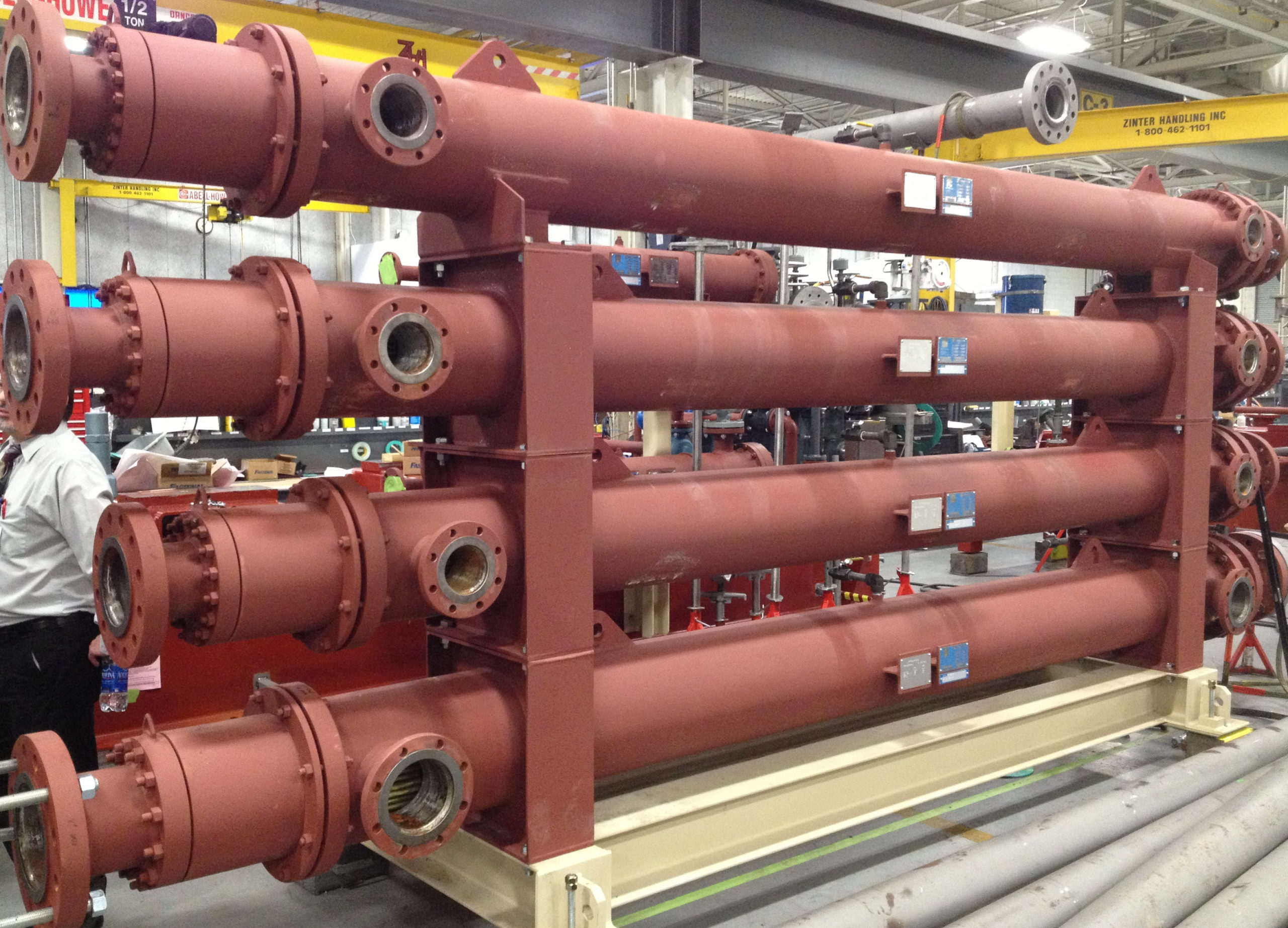Learn How Thermal Products and API Basco Can Assist You With All Your Process Gas Heating Needs!


At utility gas let down stations, the natural gas transmitted through the pipelines is reduced in pressure from the transmission pressure (up to 700 psi) down to a pressure range of 30-50 psi. As the pressure is let down, the gas expands. During the expansion of the gas it will cool, generally in the range of 10 F for each atmosphere of expansion. As the gas cools, the water vapor in the gas stream will freeze if the temperature of the gas drops low enough. The ice from the gas stream will cause severe problems in the valves and piping. To avoid the potential problem of ice formation, the gas is heated prior to the pressure let down. Typically the natural gas is heated from approximately 320 F to 850 F using a hot glycol solution or thermal oil at 1500 F.
Thermal Products recommends a high pressure API Heat Transfer Basco TEMA Type BEP or BEU shell & tube heat exchanger for natural gas heaters. A type BEP is a straight through design allowing the heat exchanger to easily be installed in the pipeline. With the high pressure gas flowing through the tubes, the BEP’s floating tubesheet design protects the unit from the stresses of differential thermal expansion.
The U-Tube configuration of the type BEU allows it to handle differential thermal expansion since the bent tubing is inherently free to expand. Both the BEP and BEU designs avoid the use of packing on the tubeside thus minimizing the chance for a dangerous natural gas leak to the atmosphere. A glycol solution or thermal oil from a Thermal Fluid Heater is circulated through the shellside of the heat exchanger, and returned to the boiler. Natural gas heaters are sized using the lowest gas pressure case, since the maximum tube velocity is obtained from the lowest operating pressure.
A variety of materials can be used but generally the heat exchanger is constructed entirely of carbon steel. This provides the required strength for the critical operating conditions while minimizing the cost of the heat exchanger. A rupture disc is normally provided on the shellside to protect the heat exchanger in the unlikely event of a tube failure. The rupture disc allows a safe escape of the high-pressure gas should a tube rupture allowing the gas to enter the shellside of the heat exchanger.
Contact Thermal Products for help with your application!



